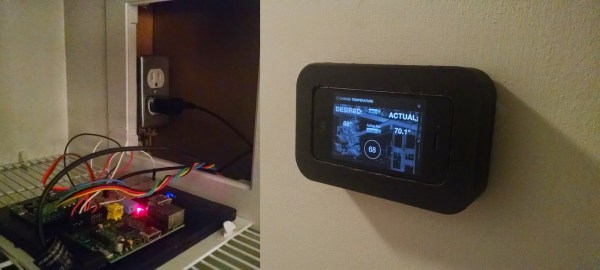[Jeff McGehee] or how he likes to be known, [The Nooganeer] just finished his first big tech project after finishing grad school. It’s a connected thermostat that makes use of his old iPhone 4, and a Raspberry Pi.
Ever since [The Nooganeer] bought his first home with his wife back in the spring of 2014, he’s had ever consuming dream of adding home automation to every appliance. As he puts it…
Home automation has always been a fascination of mine. How much time and irritation would I save if I didn’t have to worry about turning things on and off, or wonder in which state they were left? How much more efficient would my home be? Wouldn’t it be cool to always know the state of every power consumer in my home, and then be able to record and analyze that data as well?
His first challenge was making a smart thermostat — after all, heating and cooling your house typically takes the most energy. Having used a Raspberry Pi before he figured it would be the best brain for his system. After researching a bit about HVAC wiring, [The Nooganeer] settled on a Makeatronics Solid State Relay board to control the HVAC. This allows him to use the GPIO’s on the Raspberry Pi in order to control the furnace and AC unit. Continue reading “Raspberry PiPhone Thermostat Monitors Your Entire House — Or At Least That’s The Plan”
















